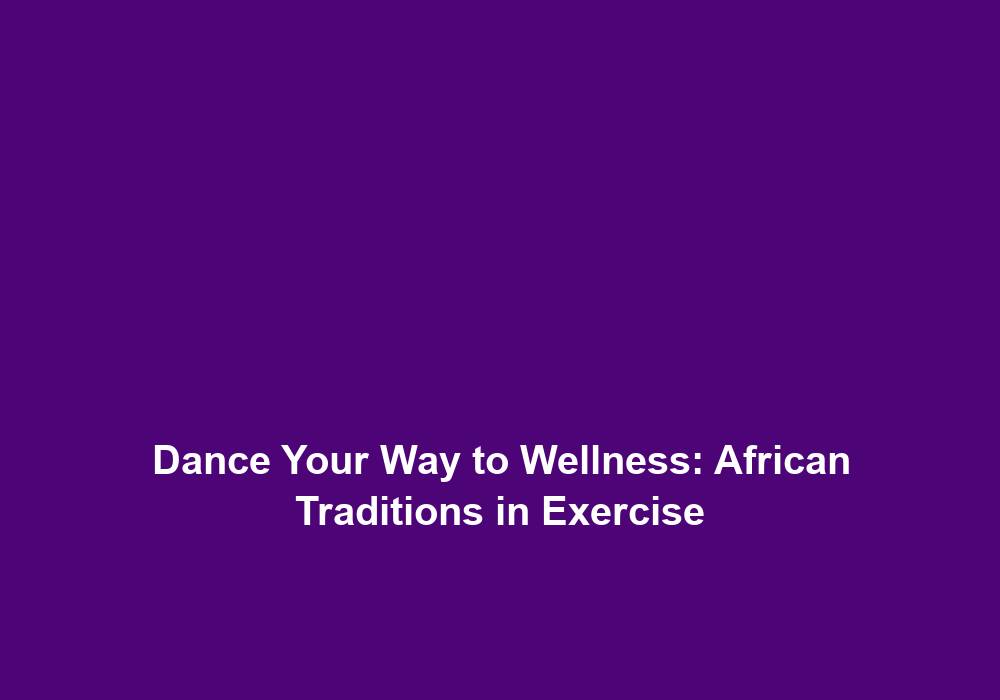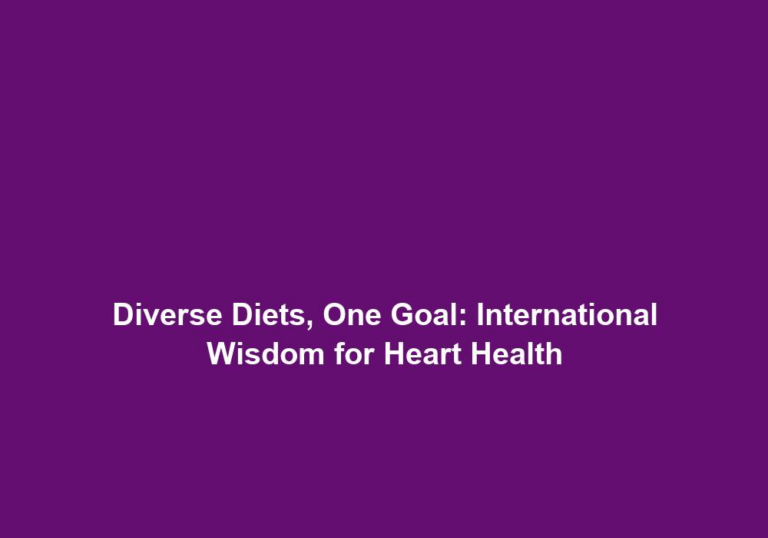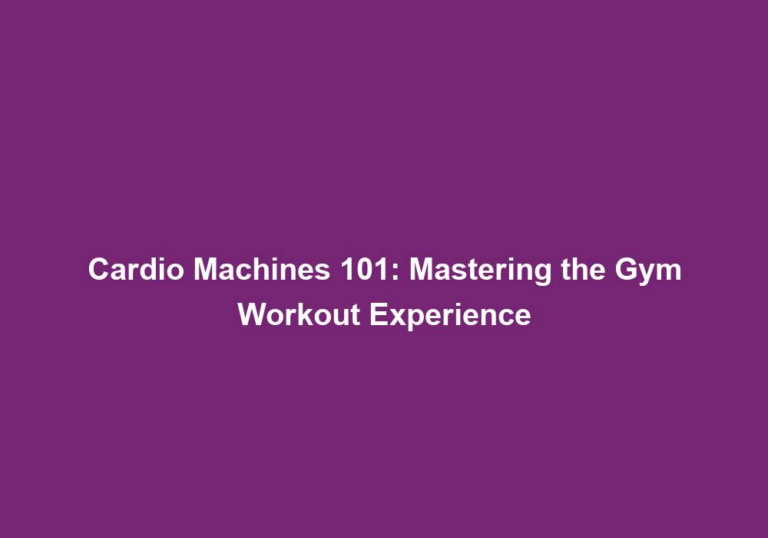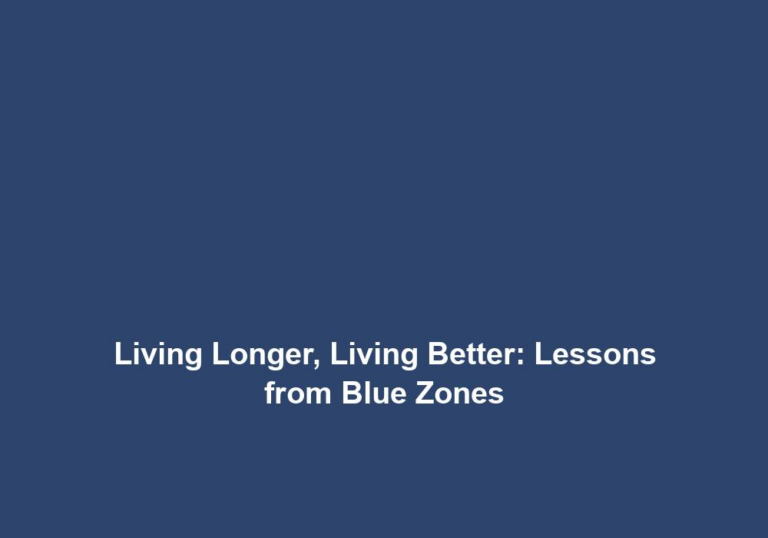Dance Your Way to Wellness: African Traditions in Exercise
In recent years, there has been a growing interest in exploring diverse and culturally rich forms of exercise and fitness routines. One such form that is gaining popularity is African dance. Combining the joy of movement, rhythmic beats, and cultural heritage, African dance offers an exciting and effective way to achieve fitness goals while embracing a unique tradition. In this article, we will delve into the world of African traditions in exercise and how dancing your way to wellness can have numerous physical and mental health benefits.
The Rich Cultural Heritage of African Dance
African dance is deeply rooted in the rich cultural heritage of the continent. Each African region and tribe has its unique style, rhythms, and movements, making it a diverse and vibrant art form. From West Africa’s energetic and rhythmic dances like the Samba and Kuku to South Africa’s expressive and storytelling dances like the Gumboot and Pantsula, every dance form showcases the history, traditions, and values of the local community.
African dance is not just about physical movement; it also embodies the spirit and essence of African culture. It serves as a means of communication, storytelling, and celebration. The movements often mimic the actions of daily life, such as hunting, farming, or courtship. By participating in African dance, individuals can immerse themselves in the cultural traditions and gain a deeper understanding of the heritage and values of the African people.
Furthermore, African dance is often accompanied by live drumming and music, adding another layer of cultural richness to the experience. The rhythmic beats and melodies create a powerful connection between the dancers and the musicians, enhancing the overall energy and enjoyment of the dance. The music and dance become intertwined, creating a synergistic effect that elevates the entire experience.
Physical Benefits of African Dance
- Cardiovascular Fitness: African dance is a highly energetic form of exercise that involves continuous movement, making it an excellent cardiovascular workout. The combination of fast-paced footwork, jumps, and turns keeps the heart rate elevated, improving endurance and overall cardiovascular health.
Regular participation in African dance can lead to increased lung capacity, improved blood circulation, and a stronger cardiovascular system. The repetitive nature of the movements, coupled with the dynamic rhythms, helps to build stamina and endurance over time. As a result, individuals who engage in African dance regularly are more likely to have a higher level of cardiovascular fitness.
- Muscle Toning and Strength: The dynamic and rhythmic movements of African dance engage various muscle groups, including the core, legs, arms, and back. The jumps, squats, and turns require strength and control, leading to muscle toning and increased strength.
The constant movement and shifting of body weight during African dance routines help to build lean muscle mass and improve muscular endurance. The core muscles, in particular, are heavily engaged throughout the dance, as they provide stability and support for the body’s movements. By regularly practicing African dance, individuals can develop a strong and toned physique.
- Flexibility and Balance: African dance involves a wide range of movements that require flexibility and coordination. Stretching and reaching exercises during dance routines help improve flexibility, while the intricate footwork and body isolations enhance balance and body control.
The fluid and flowing movements of African dance encourage the body to move in various directions and planes of motion, promoting flexibility and joint mobility. Additionally, the quick and precise footwork challenges balance and proprioception, improving overall stability and coordination. These benefits extend beyond the dance floor and can enhance performance in other physical activities or sports.
- Weight Loss and Body Composition: Engaging in regular African dance sessions can help with weight management and body composition. The high-intensity nature of the dance form burns calories and fat, contributing to weight loss and the development of a leaner physique.
African dance combines aerobic and anaerobic exercise, resulting in an increased metabolic rate and energy expenditure. The fast-paced movements and bursts of intensity during the dance routines elevate the heart rate and stimulate the body’s fat-burning mechanisms. Over time, regular participation in African dance can lead to a decrease in body fat percentage and an improvement in overall body composition.
In addition to these physical benefits, African dance also offers a range of mental health benefits.
Mental Health Benefits of African Dance
- Stress Relief: Dancing has long been recognized as a powerful stress reliever. African dance, with its pulsating rhythms and expressive movements, can serve as a form of catharsis, allowing individuals to release tension and emotions, ultimately reducing stress levels.
The rhythmic beats and music of African dance have a calming effect on the mind, helping to alleviate stress and anxiety. The combination of physical movement and music stimulates the release of endorphins, which are natural mood-boosting chemicals in the brain. The expressive nature of African dance allows individuals to express themselves freely and release any pent-up emotions or negative energy.
- Increased Happiness and Confidence: The combination of music, movement, and community in African dance fosters a sense of joy and happiness. Engaging in regular dance sessions can boost self-esteem, improve body image, and promote overall confidence.
The social aspect of African dance, whether dancing in a group or in a community setting, creates a sense of belonging and connection. The shared experience of moving to the rhythm and celebrating the African culture can bring individuals together and create a positive and supportive environment. This sense of camaraderie and acceptance can boost self-confidence and improve overall happiness and well-being.
- Cognitive Enhancement: African dance requires coordination, memorization of choreography, and synchronization with the rhythm. Regular practice can enhance cognitive functions such as memory, focus, and multitasking abilities.
Learning and mastering the intricate dance routines of African dance involve mental engagement and concentration. The continuous repetition of movements helps to improve memory and cognitive processing. Additionally, the synchronization of movements with the rhythm of the music enhances the brain’s ability to focus and coordinate multiple tasks simultaneously. These cognitive benefits can extend beyond the dance floor and improve overall mental acuity and performance in daily life.
- Cultural Connection and Identity: Participating in African dance allows individuals to connect with their cultural roots and gain a deeper understanding of African traditions and customs. This sense of cultural identity and belonging can provide a sense of purpose and fulfillment.
African dance is not only a physical activity; it is a celebration of culture and heritage. By engaging in African dance, individuals can develop a sense of pride and connection to their African roots. It allows them to express and embrace their cultural identity, fostering a sense of belonging and purpose. This connection to one’s cultural heritage can have a profound impact on mental well-being and personal growth.
How to Get Started with African Dance
If you are intrigued by the idea of incorporating African dance into your fitness routine, here are some steps to get started:
-
Research Local Classes: Look for local dance studios or community centers that offer African dance classes. Trained instructors can guide you through the basic techniques, movements, and rhythms.
-
Online Tutorials and Videos: In the digital age, there is a wealth of online resources available for learning African dance. Explore video tutorials, online classes, and virtual dance workshops to begin your journey.
-
Attend Cultural Events and Festivals: Cultural events and festivals often feature performances and workshops on African dance. Attend these events to witness the beauty and energy of African dance firsthand and connect with the local dance community.
-
Practice Regularly: Like any form of exercise, consistency is key. Set aside dedicated time each week to practice your African dance moves. As you progress, you can challenge yourself with more complex choreography and styles.
Remember to warm up before each dance session and listen to your body to prevent injuries. Start with simpler movements and gradually build up to more advanced techniques. Most importantly, have fun and embrace the joy of movement and cultural exploration!
Conclusion
African dance offers a unique and exciting approach to exercise and fitness. With its rich cultural heritage, rhythmic beats, and physical and mental health benefits, it is no wonder that more and more individuals are embracing this form of movement. Whether you are looking to improve cardiovascular fitness, tone your muscles, reduce stress, or connect with your cultural roots, dancing your way to wellness through African traditions can be a fulfilling and transformative experience. Embrace the joy of movement, immerse yourself in the vibrant rhythms, and let African dance guide you on a path to improved health and well-being.
Note: This article is written in Markdown format.







